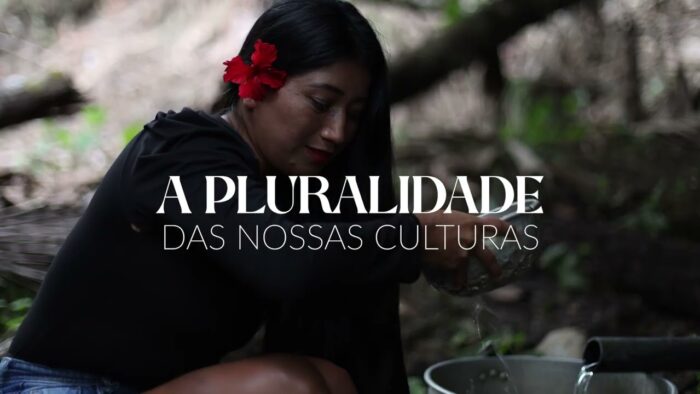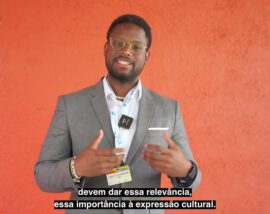Organization: UN Children’s Fund
Country: Brazil
Closing date: 01 May 2017
If you are a committed, creative professional and are passionate about making a lasting difference for children, the world’s leading children’s rights organization would like to hear from you.For 70 years, UNICEF has been working on the ground in 190 countries and territories to promote children’s survival, protection and development. The world’s largest provider of vaccines for developing countries, UNICEF supports child health and nutrition, good water and sanitation, quality basic education for all boys and girls, and the protection of children from violence, exploitation, and AIDS. UNICEF is funded entirely by the voluntary contributions of individuals, businesses, foundations and governments.Purpose of the PositionThe Child Protection Specialist is responsible for support of the development and preparation of the Child Protection (or a sector of) programs/projects and for managing, implementing, monitoring, evaluating and reporting of progress of child protection programs/projects within the country program.Key Expected Results
1. Support to program/project development and planning
– Support the preparation/design and conduct/update of situation analysis for the child protection programs/projects and/or sector to ensure that current comprehensive and evidence based data on child protection issues are available to guide UNICEF’s strategic policy advocacy, intervention and development efforts on child rights and protection and to set program priorities, strategies, design and implementation plans. Keep abreast of development trends to enhance program management, efficiency and delivery.
– Participate in strategic program discussion on the planning of child protection programs/projects. Formulate, design and prepare programs/projects proposal for the sector, ensuring alignment with the overall UNICEF’s Strategic Plans and Country Program and coherence/integration with UN Development Assistance Framework (UNDF), regional strategies and national priorities, plans and competencies.
– Establish specific goals, objectives and strategies and implementation plans for the sector/s using results-based planning terminology and methodology (RBM). Prepare required documentations for program review and approval.
– Work closely and collaboratively with internal and external colleagues and partners to discuss strategies and methodologies and to determine national priorities/competencies to ensure the achievement of concrete and sustainable results.
– Provide technical and operational support throughout all stages of programming processes and to ensure integration, coherence and harmonization of programs/projects with other UNICEF sectors and achievement of results as planned and allocated.2. Program management, monitoring and delivery of results– Plan and/or collaborate with internal and external partners to establish monitoring benchmarks, performance indicators and other UNICEF/UN system indicators and measurement to assess/strengthen performance accountability, coherence and delivery of concrete and sustainable results for the assigned sector in child protection programs.
– Participate in monitoring and evaluation exercises, program reviews and annual reviews with government and other counterparts to assess progress and to determine required action/interventions to achieve results.
– Prepare/assess monitoring and evaluation reports to identify gaps, strengths/weaknesses in program and management, identify lessons learned and use knowledge gained for development planning and timely intervention to achieve goals.
– Actively monitor programs/projects through field visits, surveys and/or exchange of information with partners/stakeholders to assess progress, identify bottlenecks and potential problems and take timely decisions to resolve issues and/or refer to relevant officials for timely resolution.
– Monitor and verify the optimum/appropriate use of sectoral program resources (financial, administrative and other assets) confirming compliance with organizational rules, regulations/procedures and donor commitments, standards of accountability and integrity and ensuring timely reporting and liquidation of resources.
– Prepare regular/mandated program/project reports for management, donors and partners to keep them informed of program progress.3. Technical and operational support to program implementation– Provide technical guidance and operational support to government counterparts, NGO partners, UN system partners and country office partners/donors on interpretation, application and understanding of UNICEF policies, strategies, processes and best practices and approaches on child protection and related issues to support program management, implementation and delivery of results.
– Arrange/coordinate availability of technical experts with Regional Office/HQ to ensure timely/appropriate support throughout the programming/projects process.
– Participate in child protection program meetings including program development and contingency planning discussions on emergency preparedness in the country or other locations designated to provide technical and operational information, advice and support.
– Draft policy papers, briefs and other strategic program materials for management use, information and/or consideration.4. Networking and partnership building– Build and sustain effective close working partnerships with relevant government counterparts, national stakeholders and global partners/allies/donors/academia through active networking, advocacy and effective communication to build capacity, exchange knowledge/expertise and to reinforce cooperation to achieve sustainable and broad results in child protection.
– Prepare communication and information materials for CO program advocacy to promote awareness, establish partnership/alliances and support fund raising for child protection programs and emergency interventions.
– Participate and/or represent UNICEF in appropriate inter-agency (UNCT) discussions and planning on child protection and related issues to collaborate with inter-agency partners/colleagues on UNDAF planning and preparation of programs/projects ensuring organizational position, interests and priorities are fully considered and integrated in the UNDAF process in development planning and agenda setting.5. Innovation, knowledge management and capacity building
– Apply/introduce innovative approaches and good practice to build the capacity of partners and stakeholders and to support the implementation and delivery of concrete and sustainable program results.
– Keep abreast, research, benchmark and implement best practices in child protection management and information systems. Assess, institutionalize and share best practices and knowledge learned.
– Contribute to the development and implementation of policies and procedures to ensure optimum efficiency and efficacy of sustainable programs and projects.
– Organize and implement capacity building initiatives to enhance the competencies of clients/stakeholders to promote sustainable results in child protection and related programs/projects.
Qualifications of Successful Candidate
Education
-An advanced university degree (Master’s degree or equivalent) in international development, human rights, psychology, sociology, international law and other social science related field is required.
Experience– A minimum of five (5) years of professional experience in social development planning and management in the field of child protection and other related areas is required.- Relevant experience in child protection and related areas (i.e. urban violence context), program/project development is considered desirable.
– Previous relevant work experience in UN system and/or agency is considered an asset.
– Experience in both development and humanitarian contexts is considered an asset.Language– Fluency in Portuguese and English is required. Knowledge of an additional UN Language (Arabic, Chinese, Russian, Spanish) is considered an asset.
Competencies of Successful CandidateCore Values
Commitment
Diversity and inclusion
Integrity
Core competencies
Communication (II)
Working with people (II)
Drive for results (II)
Functional Competencies
Leading and supervising (I)
Formulating strategies and concepts (II)
Analyzing (III)
Relating and networking (II)
Deciding and initiating action (II)
Applying technical expertise (III)
To view our competency framework, please clickhere.
Note:Please note that this Vacancy Announcement is open for competition to Brazilian nationals only.
In relation, please note that all candidates who wish to apply to this Vacancy Announcement are requested to prepare and submit their respected UNICEF applications in English language.UNICEF is committed to diversity and inclusion within its workforce and encourages qualified female and male candidates from all religious and ethnic backgrounds, representing the diversity of Brazil, such as black and indigenous people, to apply to become a part of our organization. Candidates will be treated equally regardless of gender, sexual orientation, special needs, social and HIV/aids status. UNICEF is a smoke-free environment.
How to apply:
UNICEF is committed to diversity and inclusion within its workforce, and encourages qualified female and male candidates from all national, religious and ethnic backgrounds, including persons living with disabilities, to apply to become a part of our organization. To apply, click on the following link http://www.unicef.org/about/employ/?job=504105


